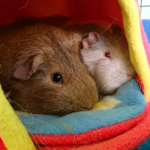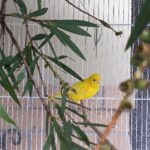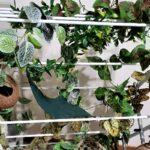The physical examination is one of the most important aspects of a consultation with your veterinarian. It allows them to assess many aspects of your pet’s physical health, and gives us a good grasp on what is ‘normal’ for your individual pet. When performing a physical exam the vet will usually first start by getting an accurate weight on your animal. Most of the pets that we deal with are quite small, so having accurate, gram-based scales that are regularly calibrated allows us to monitor this closely at each visit.

This tiny lizard is being a champ while restrained for his physical examination.
Each veterinarian may perform the physical exam in slightly different ways, but we all do so in a manner that allows us to be thorough! Often we will start at the head and then work our way down to the toes. When examining the head we will check the eyes for any discharge, or changes within the globe, we may use a special piece of equipment called an opthalmoscope to look deeper into the eye, or a special stain called fluroscein to see if there are any ulcers on the surface of the eye. The ears can be assessed visually for small patients or using an otoscope to look deeper within the canal. The nose or nares are next to be assessed – we look for any evidence of discharge or foreign bodies. Some patients require a nasal flush which can be performed during the consult.
Next we tend to move on to the oral cavity – to check the teeth (if they have any!) and the throat for any issues. In birds we thoroughly assess the beak shape and length and can perform beak shaping if there is any overgrown occurring.
It is then important to listen to the chest to hear the heart and lungs using stethoscope. This allows us to detect any heart rhythm abnormalities or murmurs, and also pick up on any abnormal lung sounds – wheezing and crackling can indicate various lung diseases. Feeling the coelom or abdomen is next on our list and we do this to detect any organ enlargement, fluid accumulation or other abnormalities. We then feel all of the bones and joints to detect any arthritic changes, broken bones or abnormalities to the skeletal system. At the same time we are usually assessing the coat or feathers (or scales!) to see how healthy they appear – coat changes can indicate a various number of health issues. It is then important to visualise the vent or rectum to make sure things are all looking normal, before feeling the feet and trimming the nails if necessary.
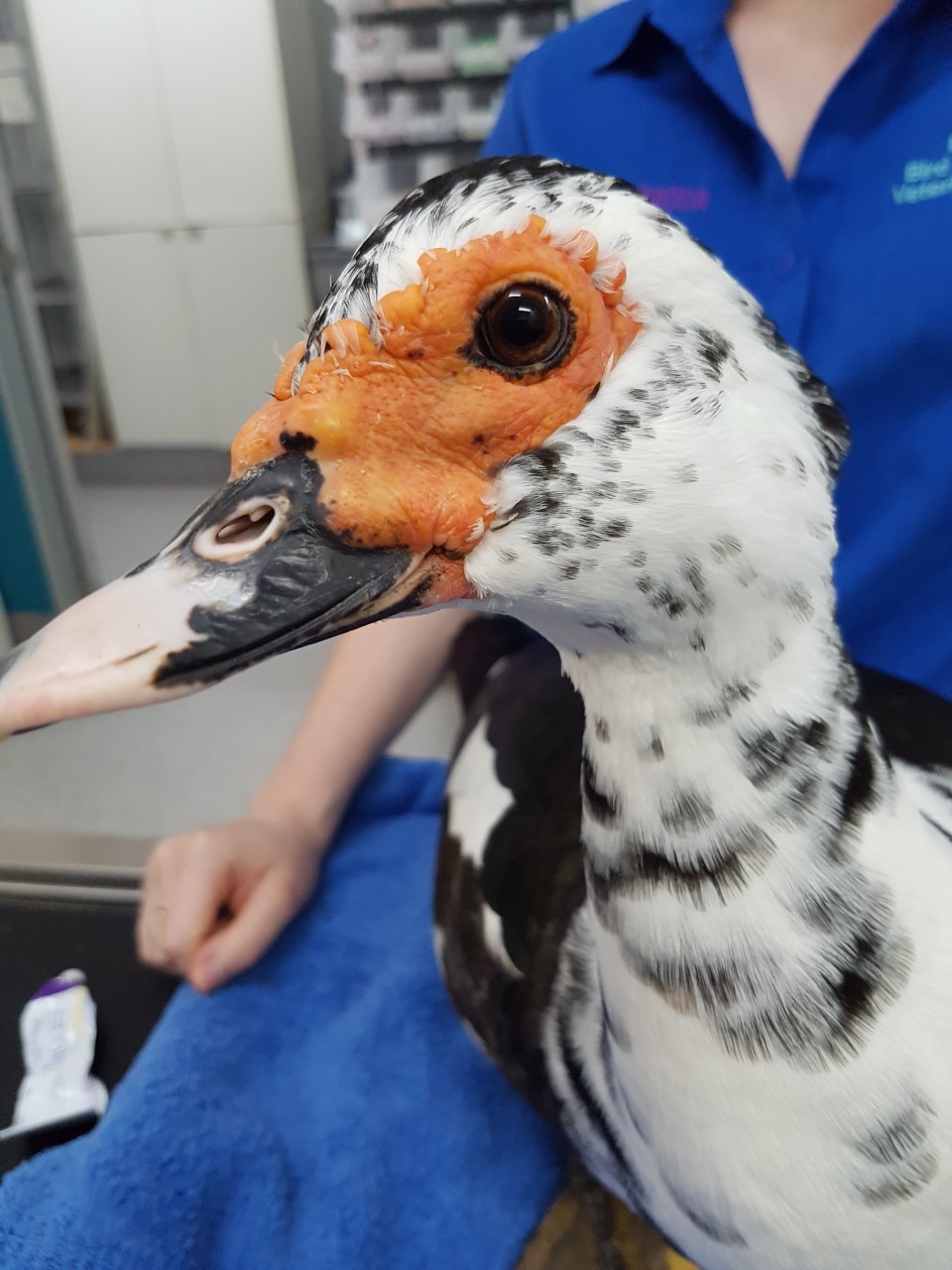
During the exam we make sure the nares and the eyes are clear – this lovely duck is a great example of lovely clear eyes and nares!
There are some more specific things we will do based on species. For example with guinea pigs it is very important we thoroughly assess their teeth, particularly the angles of the back (cheek) teeth, for this we use a special piece of equipment called a nasal speculum. For most birds there is a skin gland at the base of the tail called the uropygial gland that is visualised for any abnormalities. For reptiles we can’t use a stethoscope to listen to the heart, so we have to use a piece of equipment called a Doppler to allow cardiac assessment. Most birds will have an oral and faecal smear performed as part of their physical exam, and sometimes a crop wash to assess for any bacterial abnormalities to the crop. Most patients will have a faecal cytology assessment as part of their physical examination, depending on the species and the case.
If you have come in for a specific health concern we will then zero in on that area and go from there! With COVID we know that you miss getting to see us interact with your animals in the consultation room, but rest assured they always get cuddles and treats when we are finished. We do this because we love the animals that we see, and always want to provide them with the best.

This budgie has a very abnormal beak – something that is easily determined with a thorough physical examination
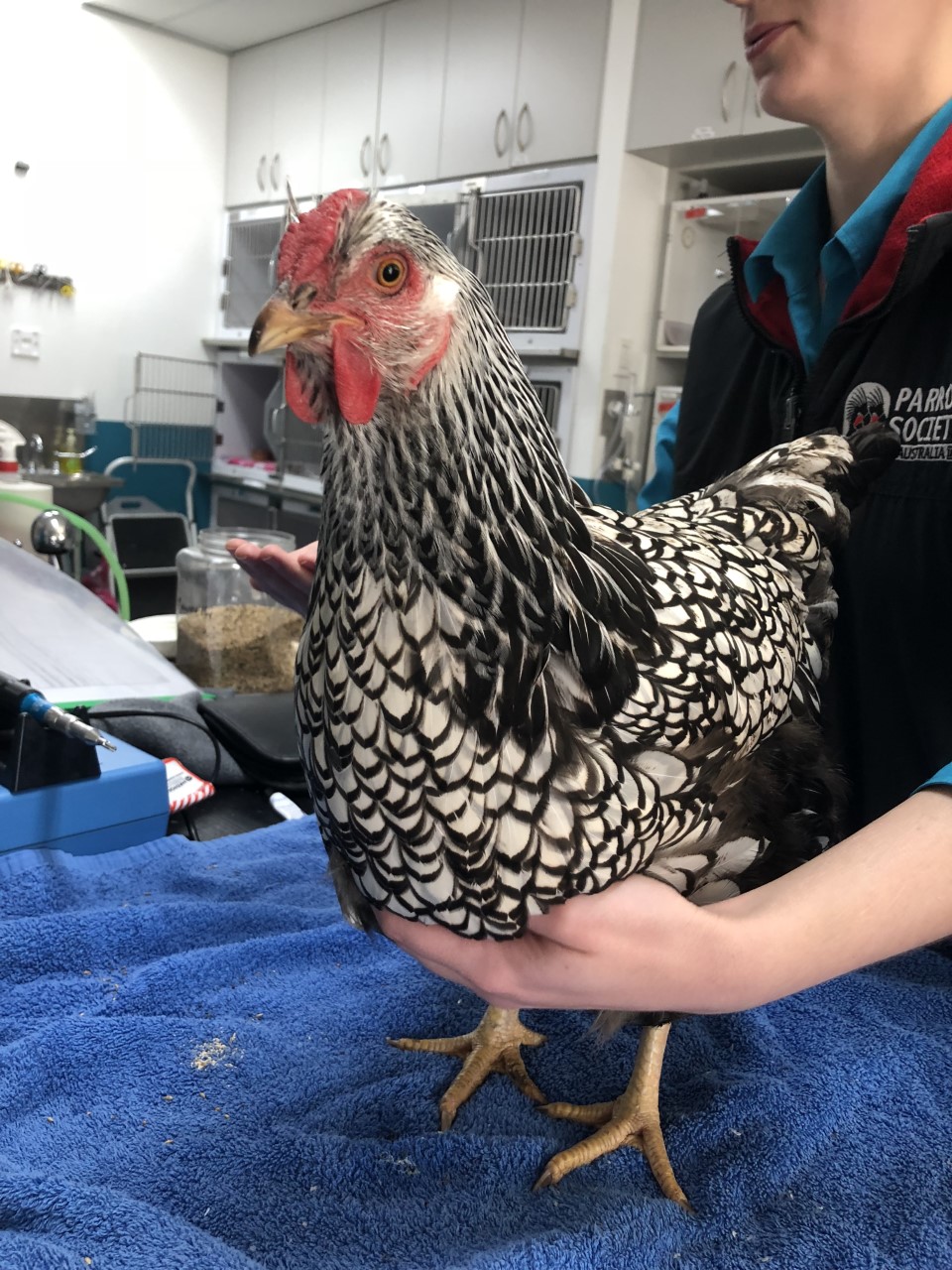
This chicken is being restrained by one of our lovely nurses for her physical exam – what a good girl!

This eclectus parrot is being so well behaved having his chest listened to.
The physical examination is a great way to start investigating any health concerns. Sometimes though more information is needed and further diagnostic tests will be suggested. Follow our Facebook page – Brisbane Bird and Exotics Veterinary Services – for the next instalment in our Avian and Exotics Diagnostics blog posts to keep up!
For any other enquiries about our avian and exotic animal services, please get in touch via our Contact Us page!


